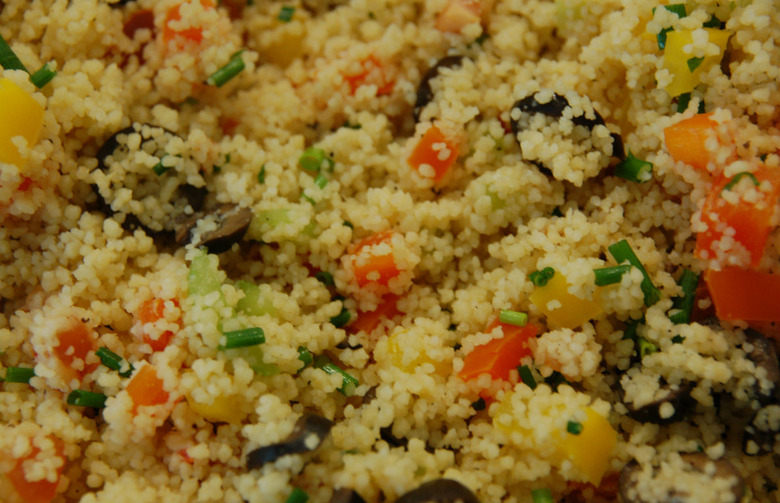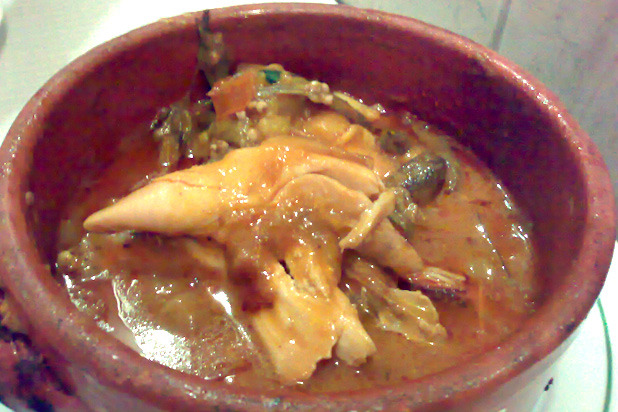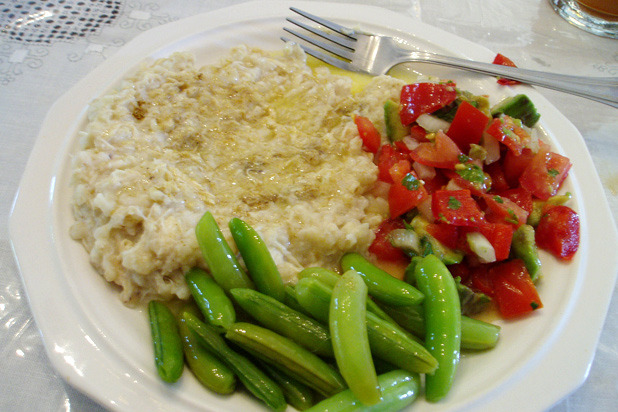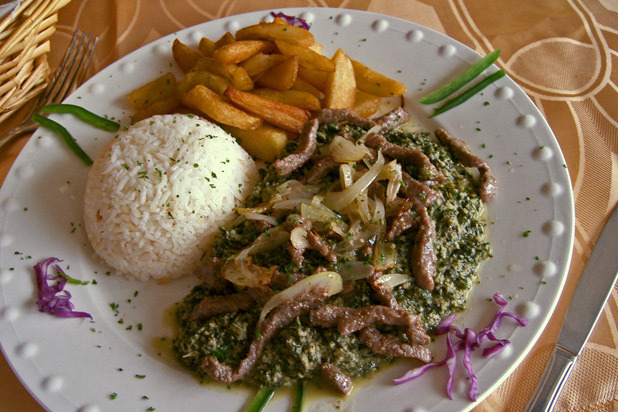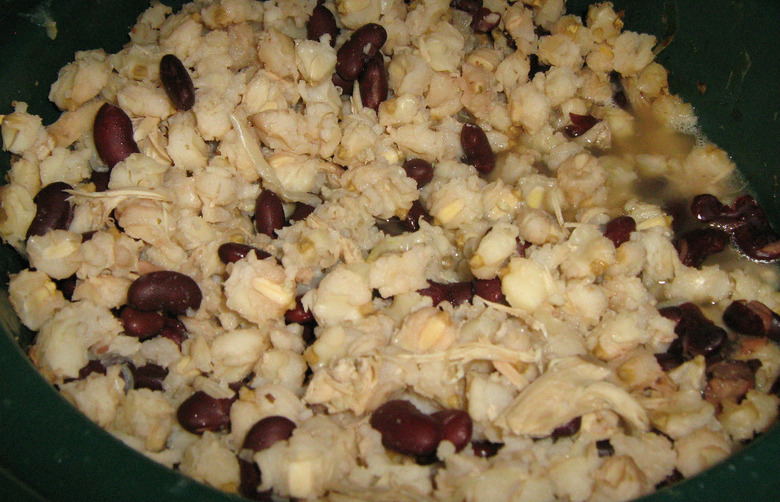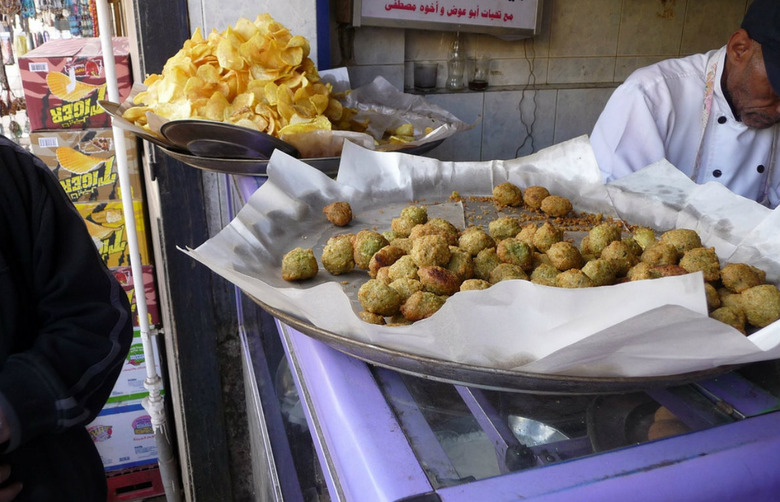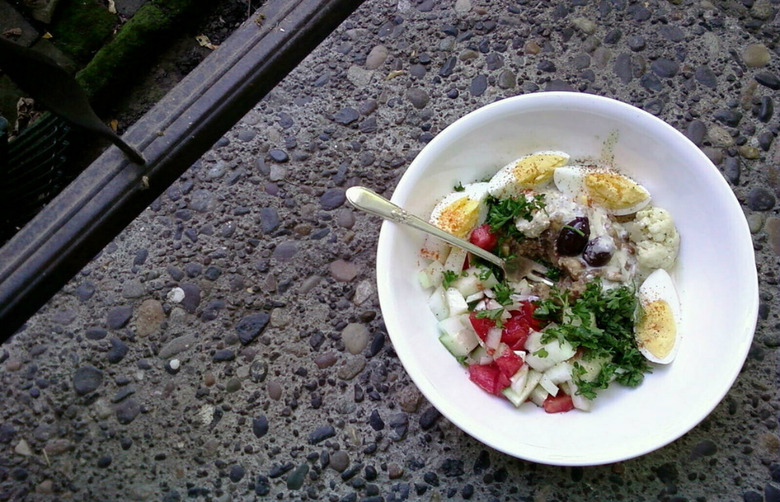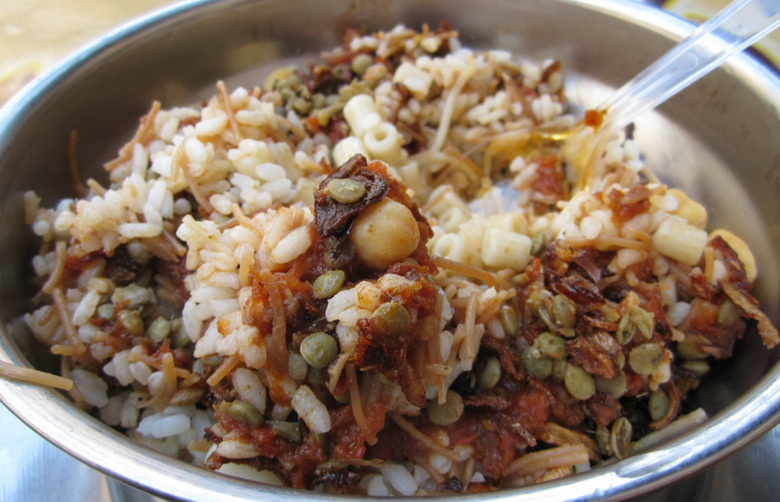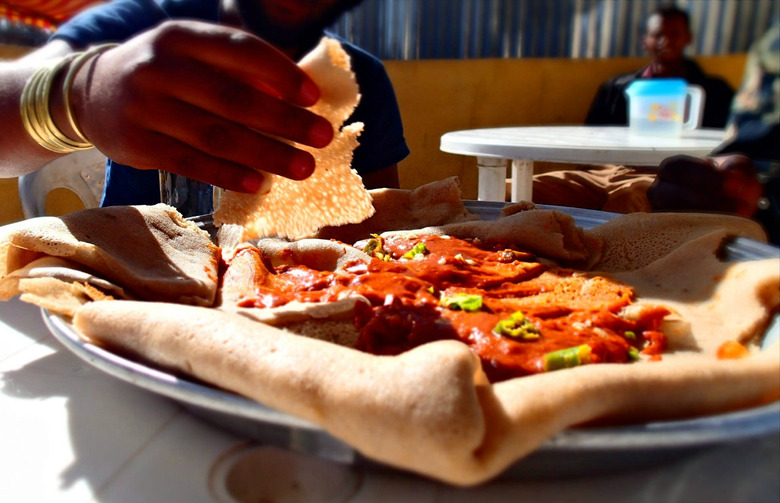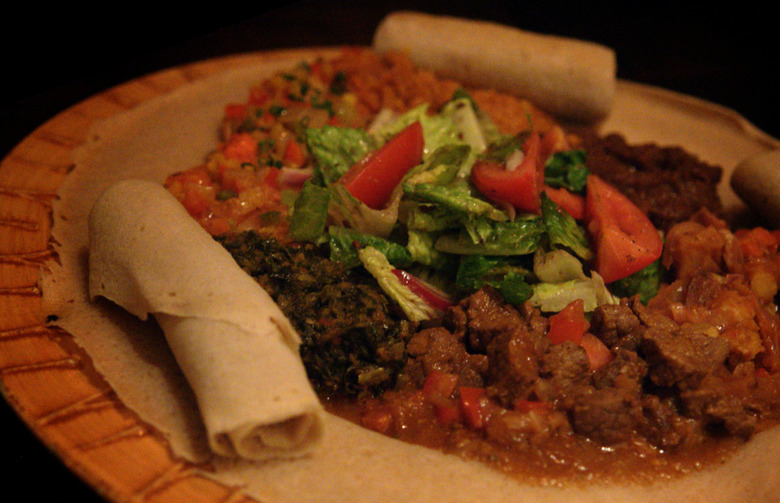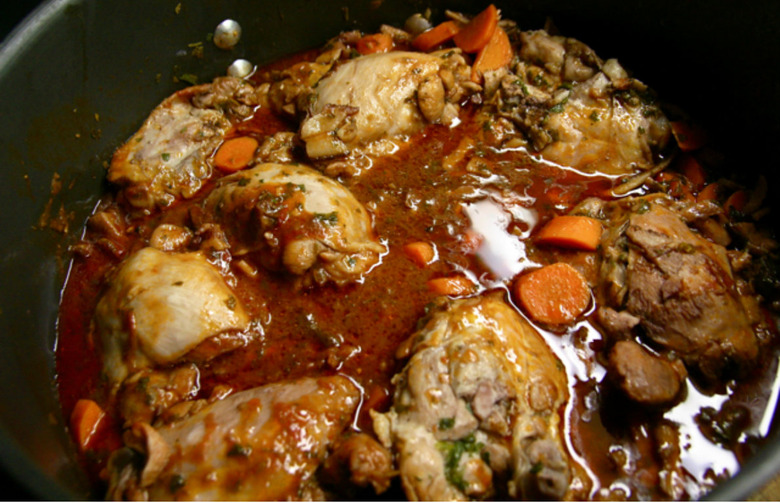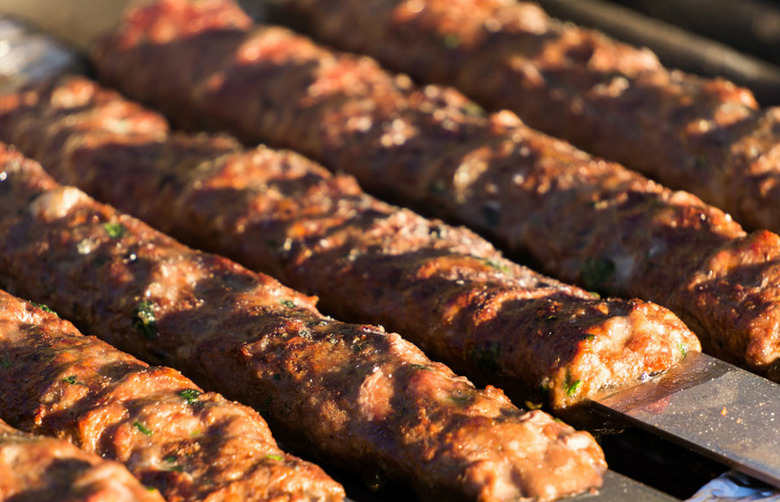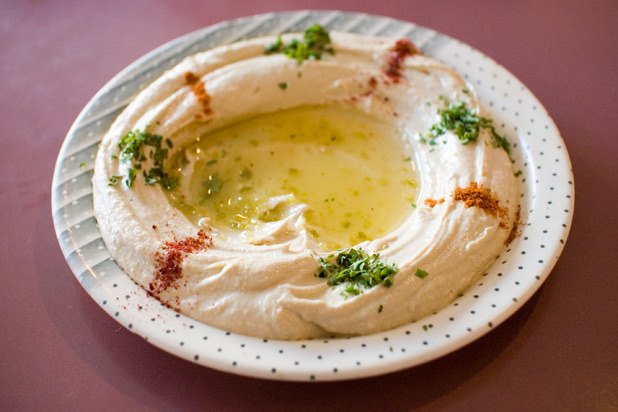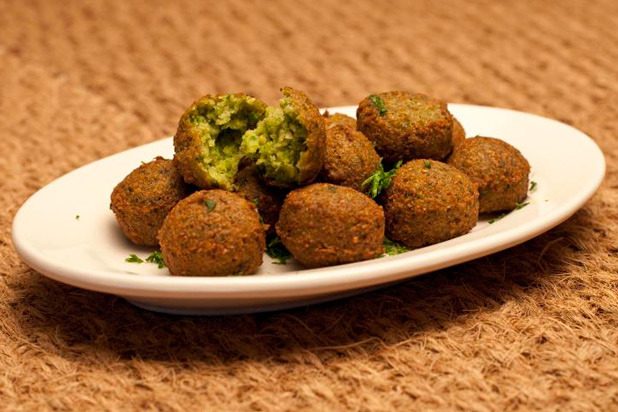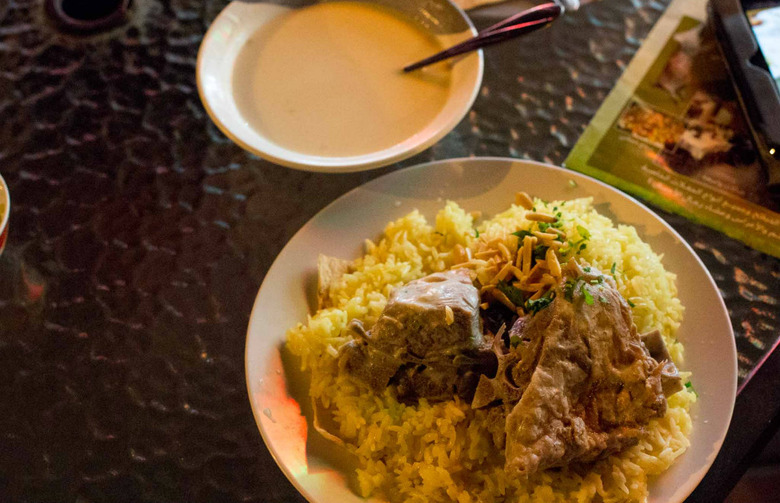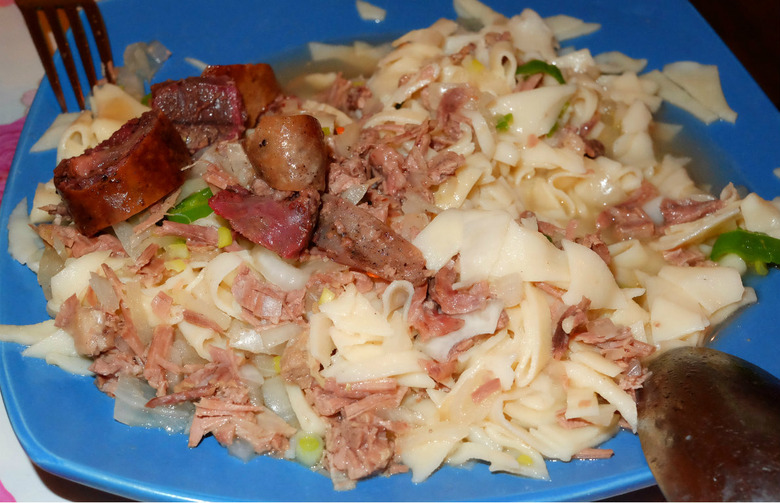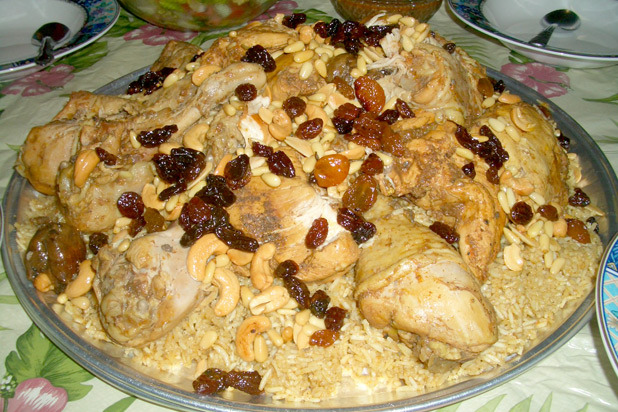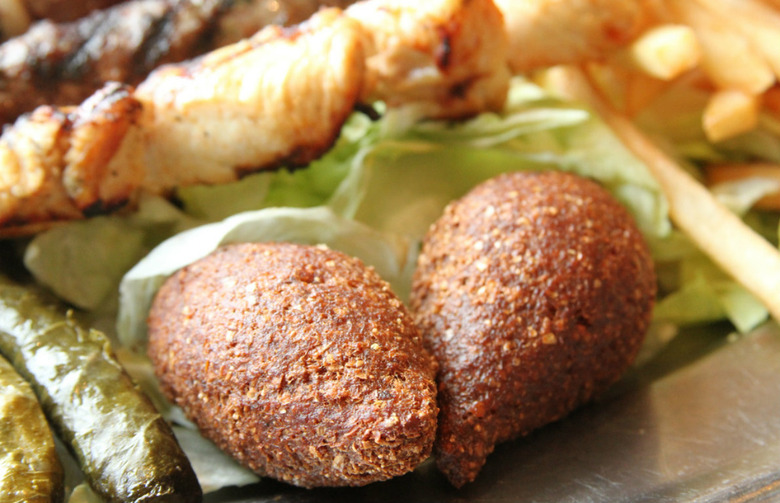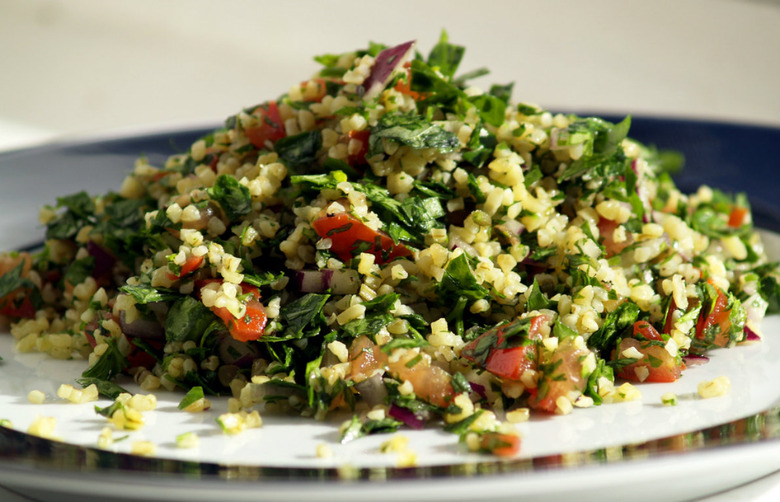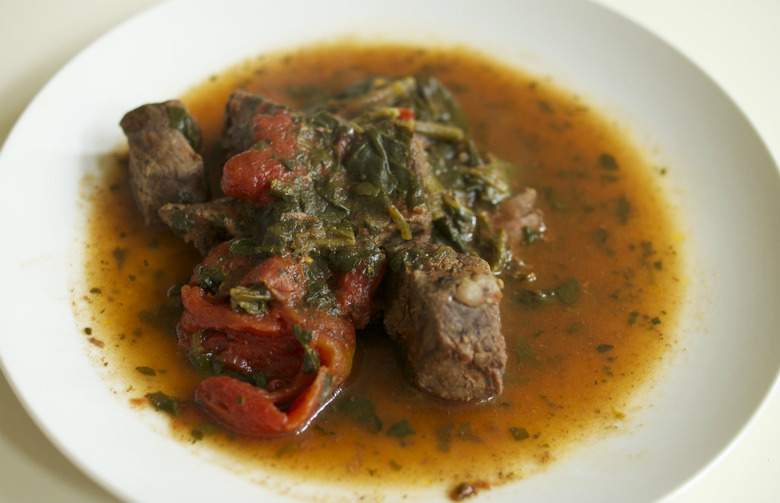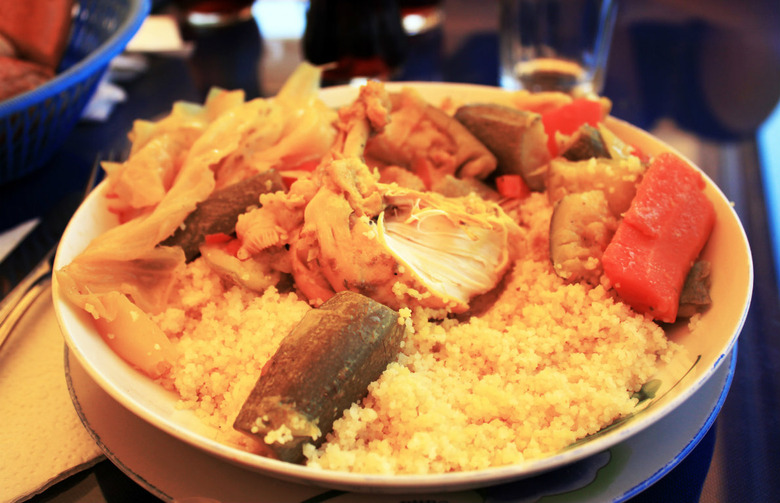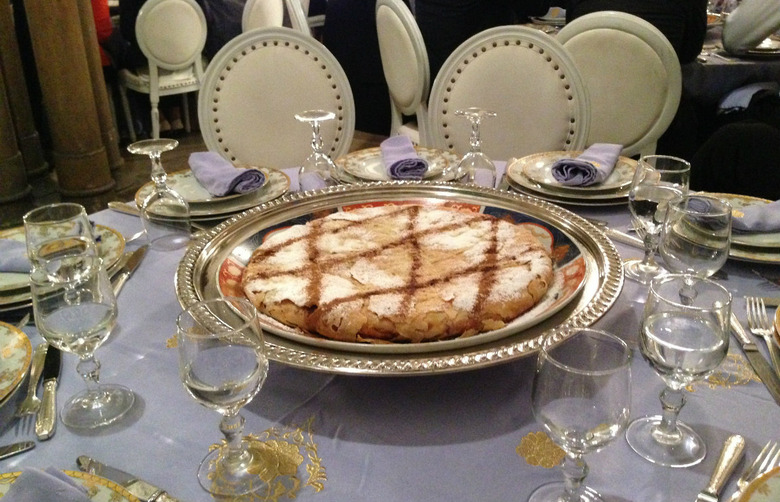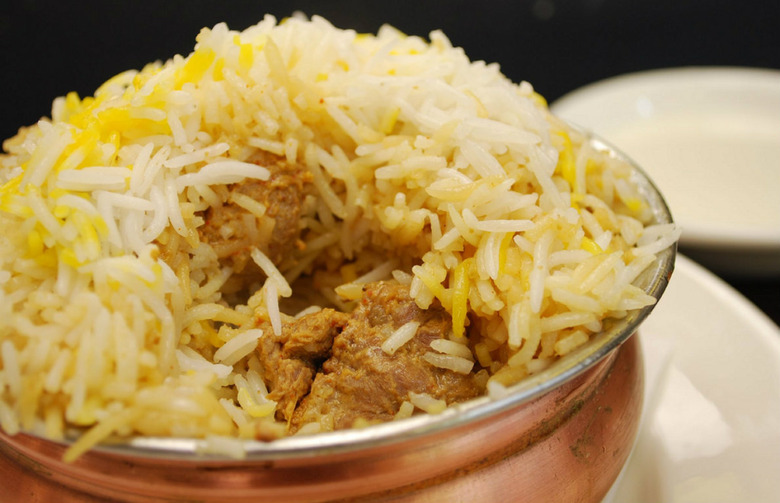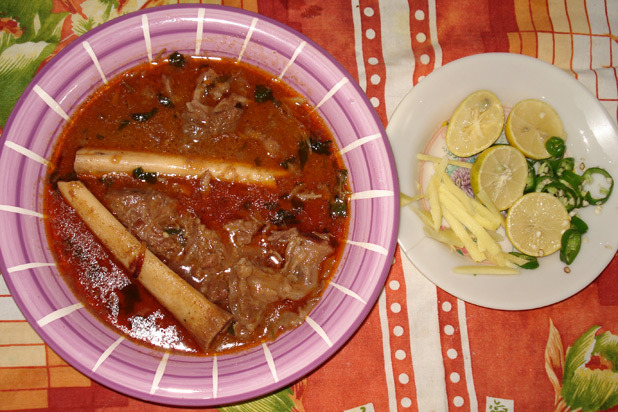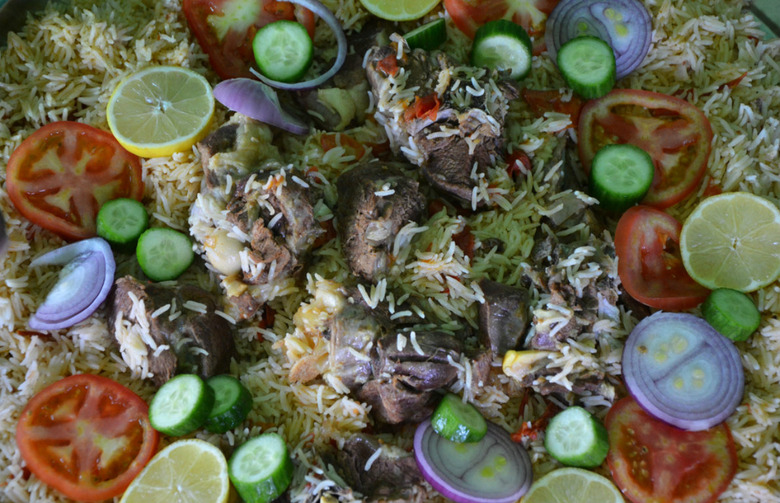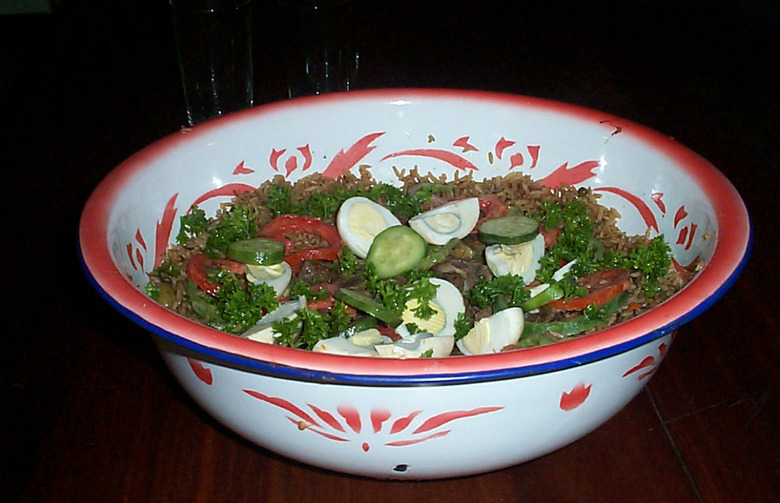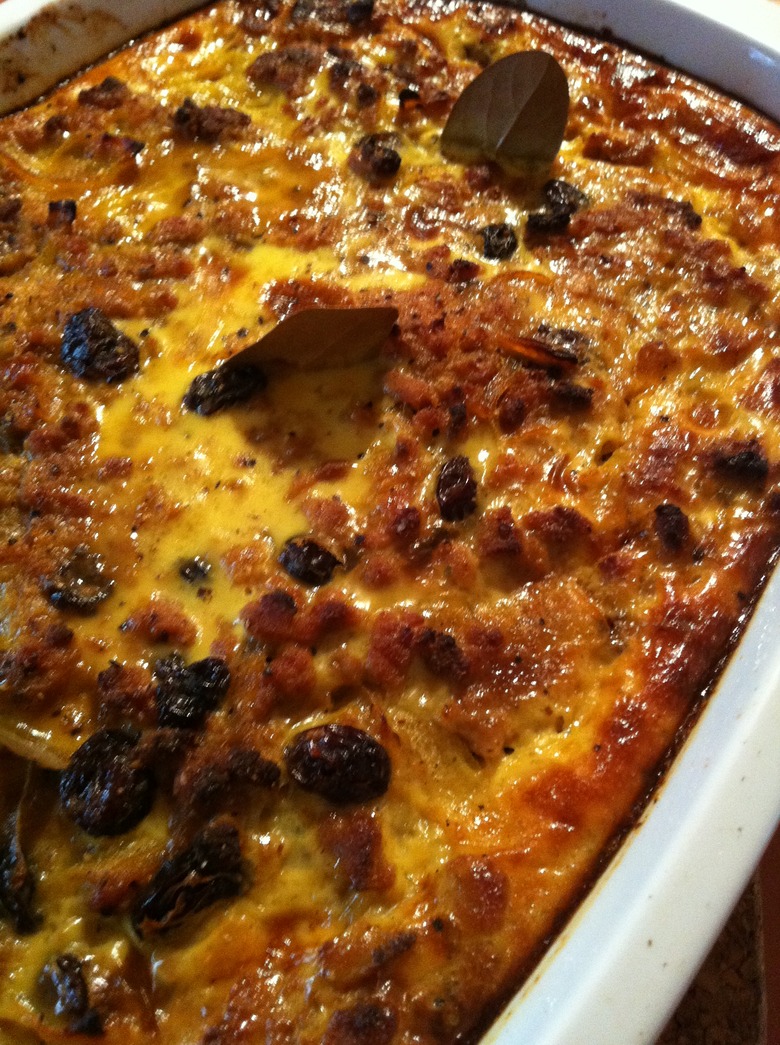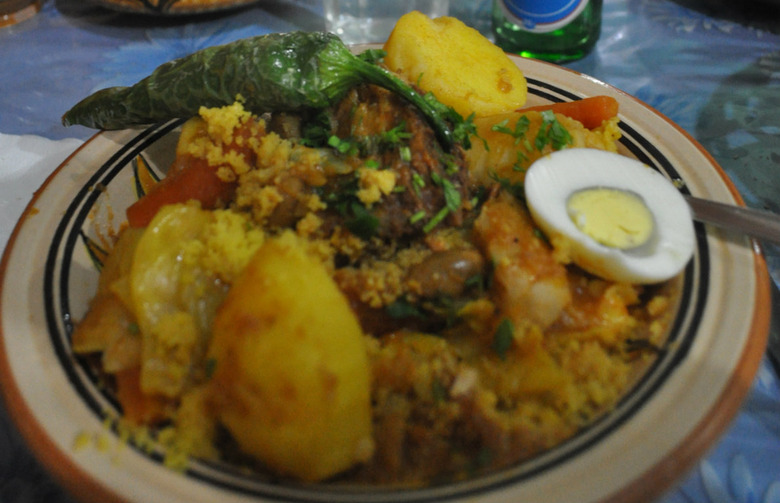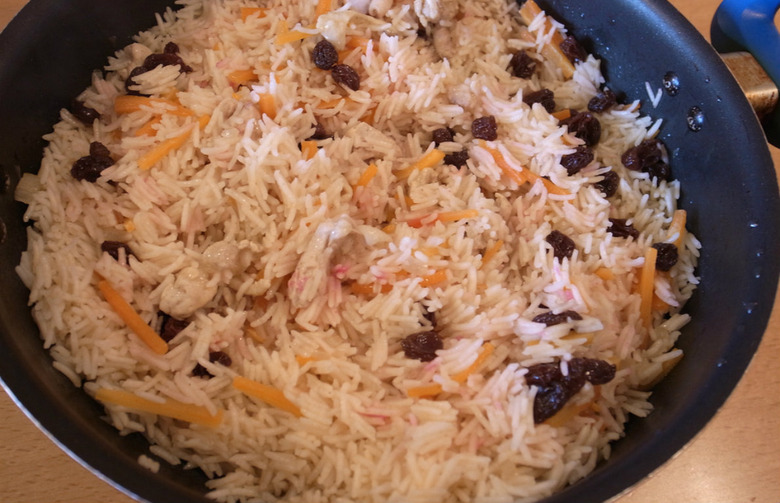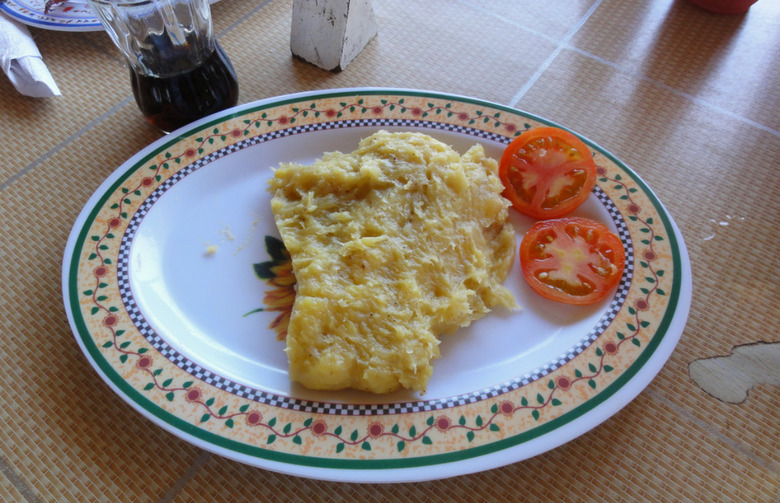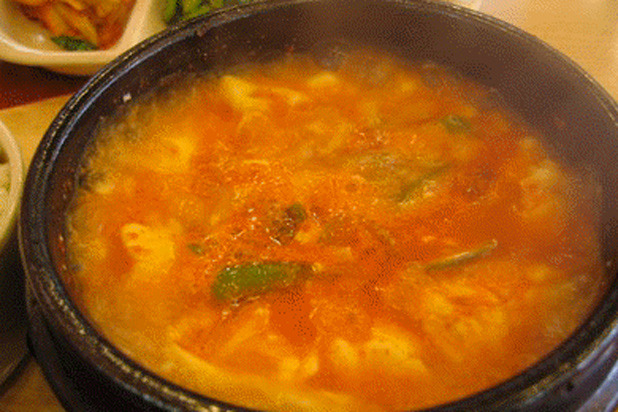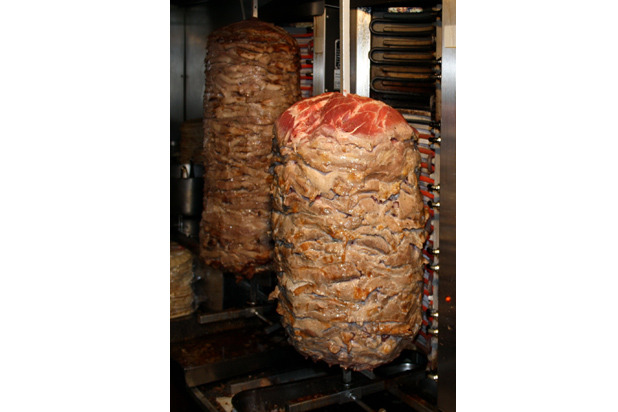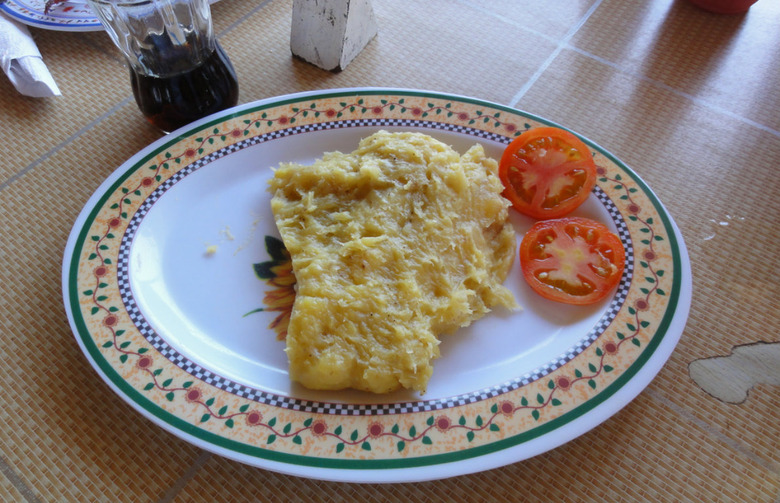150 Iconic Dishes Slideshow: Middle East And Africa
A semolina dish most commonly served with meat or vegetable stew on top, couscous is a staple of the Algerian diet. The traditional preparation is to form the small beads of semolina by hand, which is how the family that runs the famous Algiers restaurant Dar Lahlou makes and serves their couscous. They also use different grains like barley, rice, and whole wheat for their couscous.
Angola: Muamba de Galinha
Muamba de galinha, a chicken stew with palm oil, is really a home-cooked specialty. Luanda, the capital of Angola, doesn't offer many opportunities for dining out, but locals indulge in this hearty dish at Esplanade Gester, a small, low-key, alfresco restaurant serving typical fare.
Armenia: Harissa
Not to be confused with the chile paste from Tunisia, Armenian harissa is a dish of a porridge-like wheat grain cooked with meat or chicken, traditionally served on Easter. It is truly a home cook's meal, though traditional restaurants, like Old Erivan, serve authentic versions for locals and visitors alike in Yerevan.
Cameroon: Ndole
The national dish of Cameroon, ndole, is a thick stew made with nuts, bitter West African leaves, and either beef or fish. And while the region is not known for its restaurants, the street vendors at Nlongkak serve exemplary ndole.
Cape Verde: Cachupa
Cachupa can be eaten for any time of day, as evidenced not only by the many forms it comes in, but also by the practice of reheating it from the night before for breakfast. It's a slow-cooked stew with corn, beans, and meat such as sausage or chicken, served hot or fried. The more informal the better, which is why the cachupa at Tipico Restaurant in Santa Maria do Sal is so delicious.
Egypt: Falafel
Falafel is everywhere in Egypt and is an integral part of daily life. It's made of ground chickpeas (or sometimes favas) and typically served in a pita with vegetables and sauces. In Cairo, general consensus says Kazaz and Al Sharouk are the best bets.
Egypt: Ful Medames
Made of mashed fava beans with olive oil, herbs, spices, and lemon, ful medames is a popular dish to cook at home and serve with dinner, and it boasts a rich history dating back to biblical times. The upscale Abu Sid in Cairo serves a locally loved version.
Egypt: Koshary
Koshary, a vegetarian dish comprised of rice with lentils, chickpeas, and macaroni, is often topped with any number of various additions, from tomatoes to fried onions. One of the best can be found at Abou Tarek Koshary in Cairo.
Ethiopia: Wat with Injera
Ethiopians use spongy injera bread to scoop up and eat a variety of toppings called wat (or wot). They are thick stews that can be vegetarian or meaty with chicken, beef, or lamb, and always include a handful of different spices. Sample it at its best at one of Addis Ababa's better restaurants, Dashen Traditional Restaurant.
Eritrea: Zigini with Injera
Injera is a common type of bread used as both condiment and utensil for many foods throughout the Middle East and Africa. In Eritrea, the common accompaniment is zigini, which is a beef stew. Visitors and locals can sample this ever-present dish at Blue Nile in Asmara.
Gabon: Poulet Nyembwe
Similar to muamba in Angola, poulet nyembwe is a chicken dish with a sauce made with nuts from African oil palm trees. It's most common and probably at its best from a home kitchen, but traditional restaurants in Gabon, like Libreville's L'Odika, are exemplary.
Iran: Chelow Kebab
Chelow kebab is a traditional Iranian meal that consists of more than just grilled meats on a stick — it's also spiced and buttered basmati rice, grilled tomatoes on the side, and (in some regions) a raw egg yolk placed on top. The dish is commonly found in home kitchens and street stalls, but start sampling with the upscale kebabs at Bistango in Tehran.
Israel: Hummus
You may not know that in Israel, a plate of hummus with pita can be considered a full meal (not just a side dish as it often is stateside). Hummus is made with cooked and mashed chickpeas, olive oil, lemon, garlic, and, often, tahini (sesame paste). Try filling up on it at Abu Hassan (also called Ali Caravan) in Jaffa or Hummus Ashkara in Tel Aviv.
Israel: Falafel
While the origins of falafel remain unclear, it has become a huge part of today's Israeli diet. It also sparks huge debate among dwellers of Tel Aviv, Jerusalem, and beyond about which shop makes the best. Try some (with a side of hummus) from Ta'ami in Jerusalem.
Jordan: Mansaf
Served at every special occasion and holiday in Jordan, mansaf is an important communal dish that reminds modern Jordanians of the early Bedouins. It is made of lamb cooked in a fermented dried yogurt and served with rice, and can be sampled by locals and visitors at Tawaheen al-Hawa in Amman.
Kazakhstan: Beshbarmak
Traditionally a food eaten by nomadic tribes in Kazakhstan and Kyrgyzstan, beshbarmak means "five fingers" because it's eaten by hand. It consists of boiled meats (often horse meat) served with noodles and can be found, arguably in its most authentic form, at street stalls, as well as Kazak restaurants like Zheti Qazyna in Almaty.
Kuwait: Machboos
Many cuisines are on offer throughout Kuwait City, where streets are lined with luxury hotels and high-end restaurants. But it is this simple dish of long-grain rice with spices, cooked meats, and vegetables that continues to represent Kuwaiti cuisine. And one of the best plates of machboos is available at Freej Swaileh.
Lebanon: Kibbeh
It comes in all kinds of shapes and preparations, but the basis of Lebanese kibbeh remains the same — it's made of bulgur or rice mixed with ground meats. Some fry it in a ball, some cook it into a soup, and others make it into a flat pie; one of the most popular versions is served raw. The variations depend on region and personal preference, but many locals agree that Zawat in Saida in the south and Burj El Hamam in Beirut both serve authentic and delicious versions.
Lebanon: Tabbouleh
One of the Arab world's ubiquitous dishes, tabbouleh has slight variations in Lebanon, Greece, and Israel, but it is originally Lebanese. Made of bulgur, tomatoes, and finely chopped vegetables and herbs, it's a healthy and refreshing side dish to stews and falafels. One of Lebanon's most famous restaurants, Manuella, serves a tabbouleh that's widely accepted as one of the best.
Madagascar: Romazava
Romazava was originally served in the 1800s at celebratory feasts in Madagascar, before the French colonization of the country. It remains a staple of the local diet even today, despite most other dishes of the time becoming much less prevalent. The stew of meats and green vegetables can be sampled at the Hôtel du Louvre's restaurant in Antananarivo.
Morocco: Couscous
Served alongside meats and fish, Moroccan couscous serves the same daily purpose as it does in Algeria and Tunisia. Local aficionados pay close attention to the way their couscous is made, which is why they choose Dar Moha, in Marrakesh, where they maintain a more ancient technique.
Morocco: Pastilla
Pastilla is a flaky pastry filled with meat, traditionally squab or shredded chicken, that marries the salty and savory filling with sweet phyllo dough, cinnamon, and sugar. One of the best can be found at Al Jawda pastry shop in Marrakech.
Pakistan: Biryani
There are endless versions of biryani depending on where you are, but in Pakistan, sindhi biryani wins. It is made with chicken, basmati rice, vegetables, chiles, and yogurt. Transforming from a street stand to a brick-and-mortar chain, Student Biryani serves some of Islamabad's favorite plates of this traditional dish.
Pakistan: Nihari
Locals will concede that nihari, made with meat (with bones, so diners can enjoy the marrow), chiles, herbs, spices, and vegetables, is something of a comforting, heavy, almost guilty food. It supposedly originated in the 18th century in Old Delhi, but visitors can stop into Javed Nihari in Karachi for an authentic taste.
Saudi Arabia: Kabsa
At its most basic, Saudi Arabian kabsa is a spiced rice dish with meat and vegetables. The list of spices is exhaustive (saffron, cinnamon, nutmeg, cloves), as is the list of various meats and vegetables used (chicken, lamb, goat, beef, fish). Al Taboon, in Riyadh, specializes in kabsa and is a local favorite.
Senegal: Thieboudienne
Thieboudienne (locally called just "thieb") is a dish that breaks down barriers — you'll see locals of all backgrounds together at hole-in-the-wall joints to eat it, like at Chez Loutcha in Dakar. It's made with fish, rice, and tomato sauce with onions and is reportedly attributed to one clever woman in Saint Louis, Senegal.
South Africa: Bobotie
South Africa is filled with exemplary international cuisines, but native dishes like bobotie showcase the many culinary influences in the country, in this case Dutch. It's minced meat with an egg topping that dates back to the 17th century. Sample the rich dish at Café de la Vie in Johannesburg.
Tunisia: Couscous
Just as it is a staple in Morocco and Algeria, couscous is a daily food in Tunisia. A long-loved plate of couscous is on offer to locals and visitors at Dar Chakra in Monastir.
Turkmenistan: Palaw
Basically a rice pilaf, palaw consists of stewed rice, meat, and vegetables, and is sometimes sprinkled with raisins or currants. It can be sampled at its best at Ankara restaurant in Ashgabat.
Uganda: Matoke
Simple steamed plantains make up Uganda's humble national dish. Kampala's Ekitoobero Restaurant has been going strong for 10 years, serving the dish just the way the locals love it.
Yemen: Saltah
Usually a lunch dish, saltah is pretty hearty. With a base of lamb, chicken, or beef, it is more like a stew than a soup and is commonly eaten with flatbread. Eat where the locals do and head over to Houmald Salta in San'a, which is said to have the best in town.
Turkey: Doner Kebab
The doner kebab is shaved meat (often lamb) stacked on a spit and roasted, then sliced vertically and served on pita with such accoutrements as tomatoes, onions, lettuce, pickles, cabbage, and cucumber, along with sauces like tahini or tzatziki.The debate on who makes the best in Istanbul is heated, butiya Kebaband Dnerci ahin Usta make some of the most beloved.
150 Iconic Dishes from Around the World
Originally published on February 6, 2012.
See the rest of the world's 150 iconic dishes...
